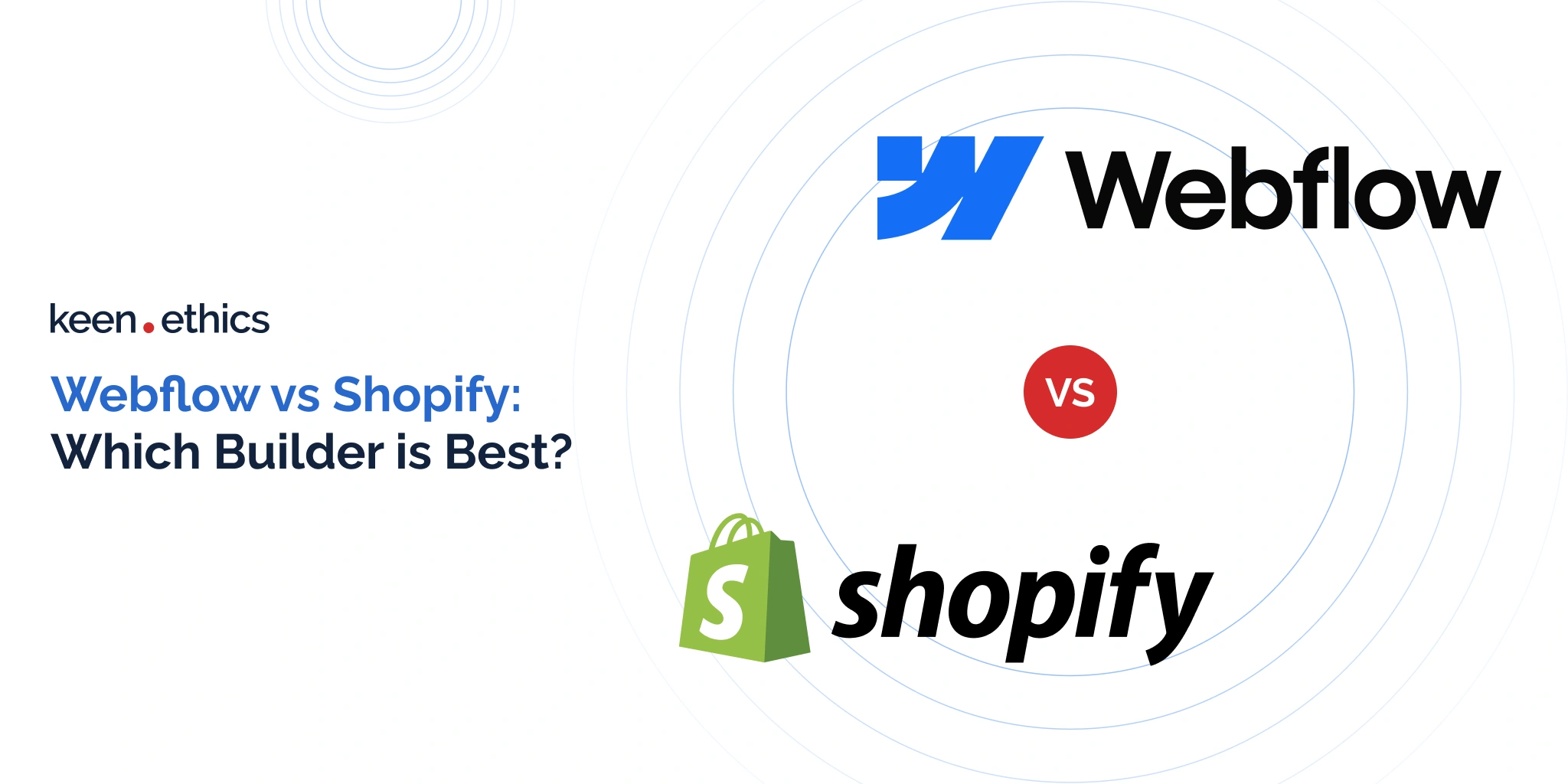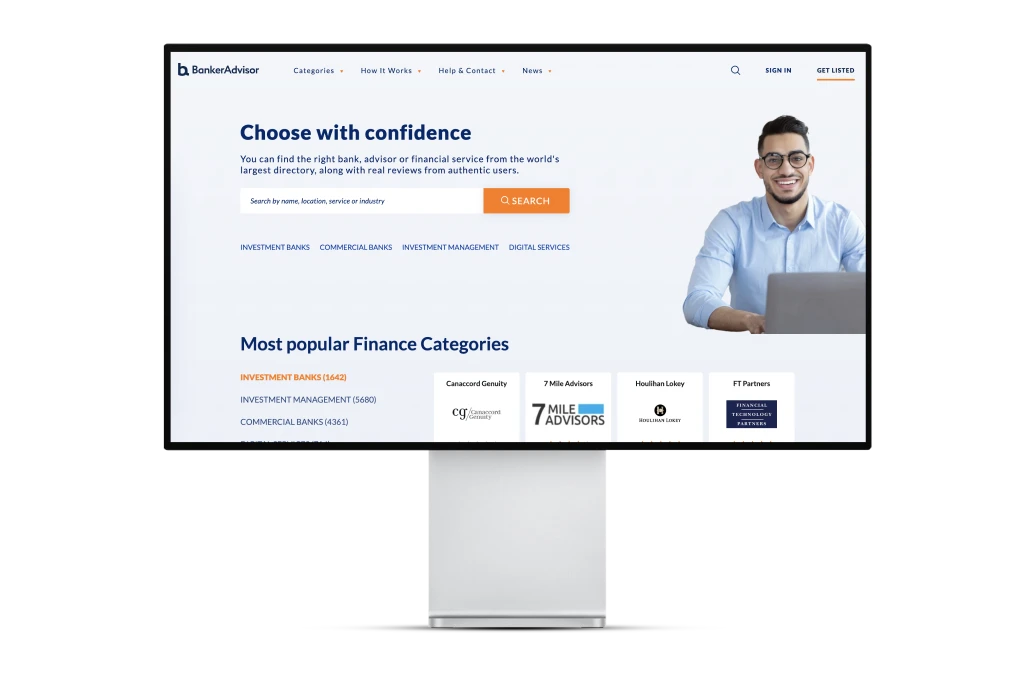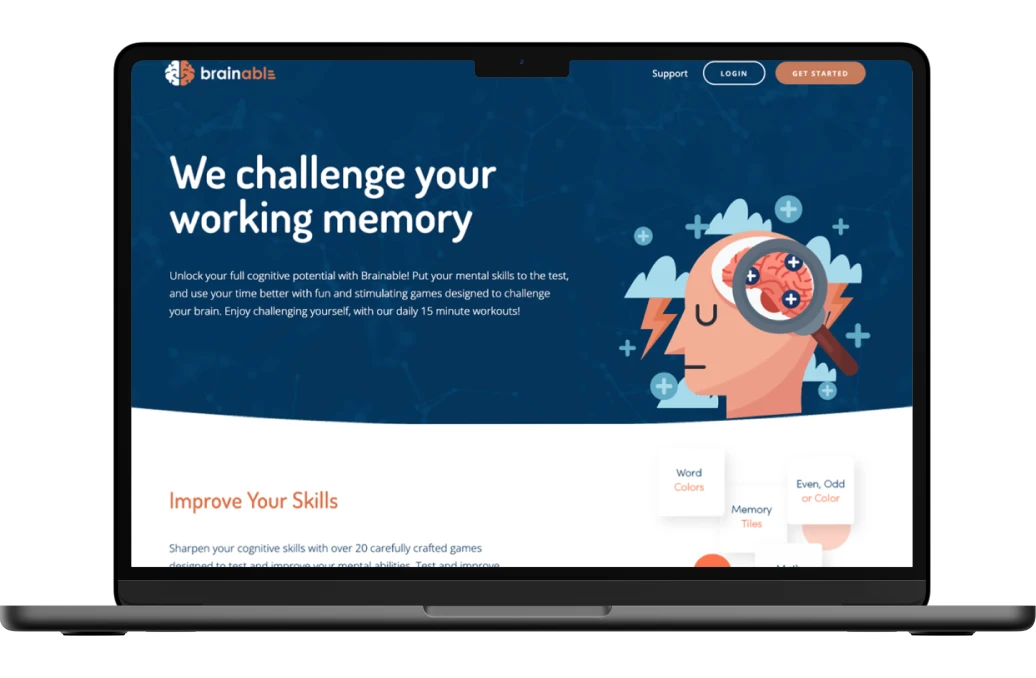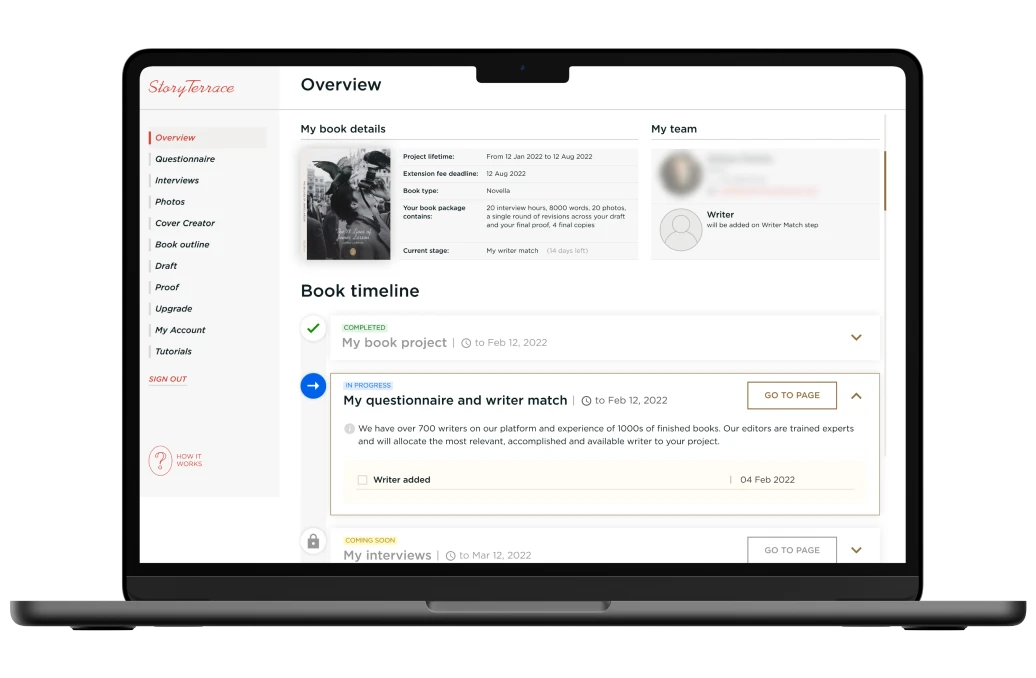Chances are, you’re building an e-commerce website and have landed on a key question: how do you put that website online? Today, two names dominate this decision — Shopify and Webflow — and choosing one isn’t as simple as it seems.
As e-commerce evolves alongside business needs, the line between these two platforms is starting to blur. Shopify is becoming more customizable. Webflow is adding advanced e-commerce features. Both offer integrations, AI-powered solutions, and templates, but which one is the right fit for you?
At Keenethics, we’ve helped businesses launch e-commerce projects of every complexity. Based on those insights, this guide breaks down the practical details that matter most when weighing up these two content management systems (CMSs). So read on, take notes, and make a decision you won’t second-guess.
Overview of Webflow and Shopify
Before jumping into comparisons, it’s worth taking a step back to understand what each platform actually is. Webflow and Shopify often land in the same conversations, but they weren’t built with the same goals in mind. Yes, both can help you launch an online store. The real difference lies in the way they do it and the kind of control they give you.
To figure out which one matches your needs, let’s look at them in detail.
What is Webflow?
Webflow was launched in 2013 as a no-code platform and gave users the freedom to design complex layouts without the overhead of a full development team. As of October 2025, this tool powers over 650,000 live websites.

Webflow started as a general-purpose website builder. The core strength is flexibility. By using a visual editor, users can control every element on a page, including layout, spacing, interactions, and animations, all while the system writes clean HTML, CSS, and JavaScript in the background.
In 2019, Webflow made a clear push into e-commerce. Now, it supports product catalogs, shopping carts, checkout flows, and essential features for online selling. That brings it closer to Shopify in terms of capability, and it’s one of the reasons more and more businesses turn to us for Webflow development services.
What is Shopify?
Shopify is a dedicated all-in-one platform built to help people sell online. Launched in 2006, it quickly positioned itself as the go-to tool for setting up online stores with minimal friction and now powers upwards of 6.2 million live websites.

Unlike Webflow, which evolved from a design solution, Shopify has always been about commerce. You don’t have to think about where your site is hosted or how to connect a payment gateway because it’s already done for you. With just a few clicks, you can choose a template, add your products, and start selling.
There’s also a low barrier to entry. Anyone can sign up and launch a store directly from a browser. For businesses that want to sell fast and scale with confidence, Shopify remains one of the most accessible e-commerce platforms. It works just as well for solo entrepreneurs as it does for high-volume operations.
Webflow vs Shopify Basic Features Comparison
In the Shopify vs Webflow debate, your choice won’t come down to which is objectively better, but which one fits your business model, workflow, and growth strategy. So instead of sweeping conclusions, let’s look at how they perform.
Ease of Use & Interface
If you’re looking for the fastest way to get a store online, Shopify makes that process almost effortless. The interface is clean and intuitive, with a familiar left-hand menu that gives you quick access to products, orders, themes, apps, and other things. On the right, you manage and configure whatever section you’re working on.
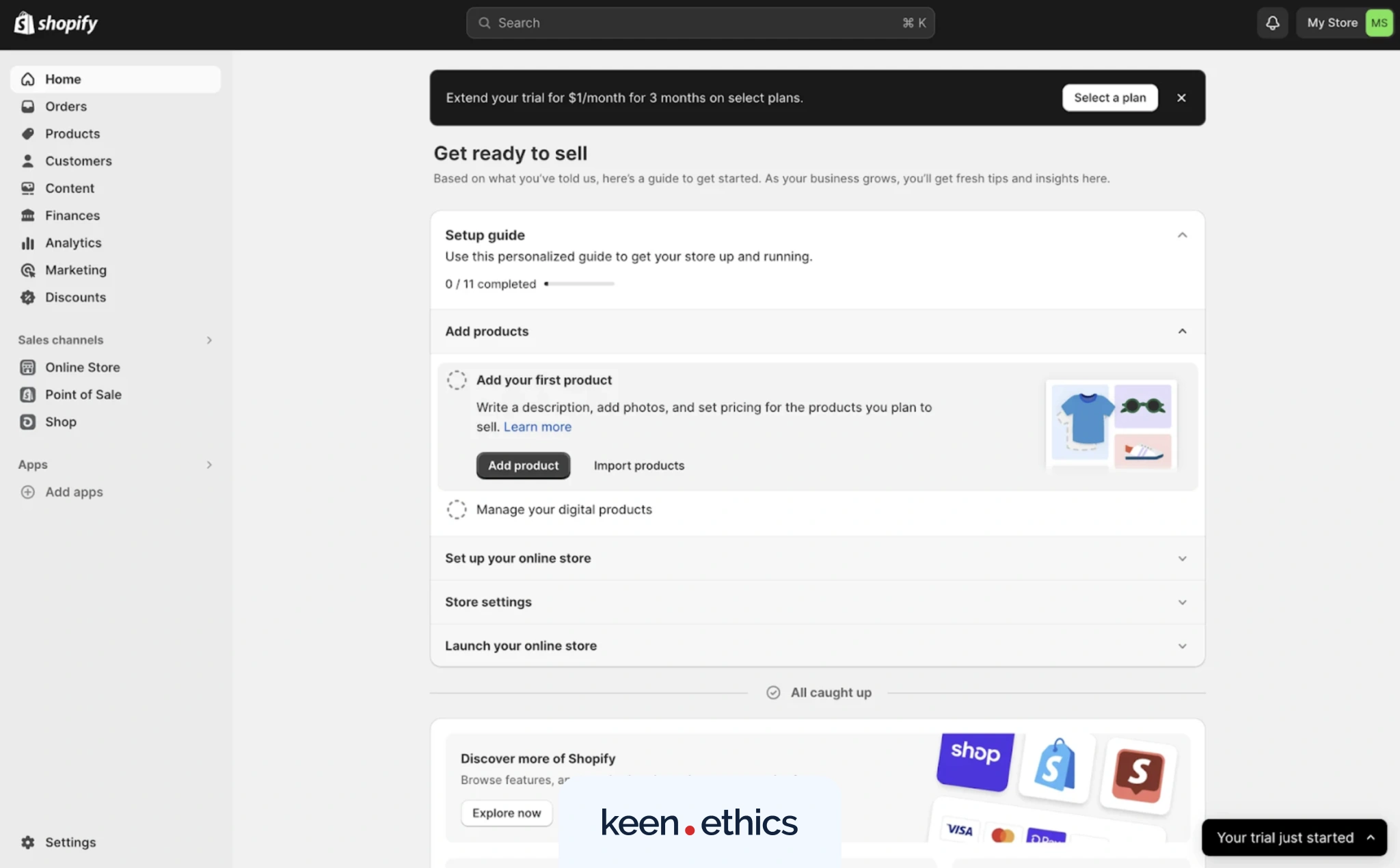
This CMS also includes a drag-and-drop theme editor for building your homepage and other templates. You can arrange content blocks, add product sections, and preview everything in real-time. As many users note in community threads, it’s flexible enough to create a functional store and simple enough to master in hours.
Webflow takes a different approach and gives you control over the visual and structural details. The interface centers around a design canvas, flanked by side panels that let you manage elements, styles, animations, and HTML structure. You can create a Webflow site from the ground up and take advantage of the customization tools.
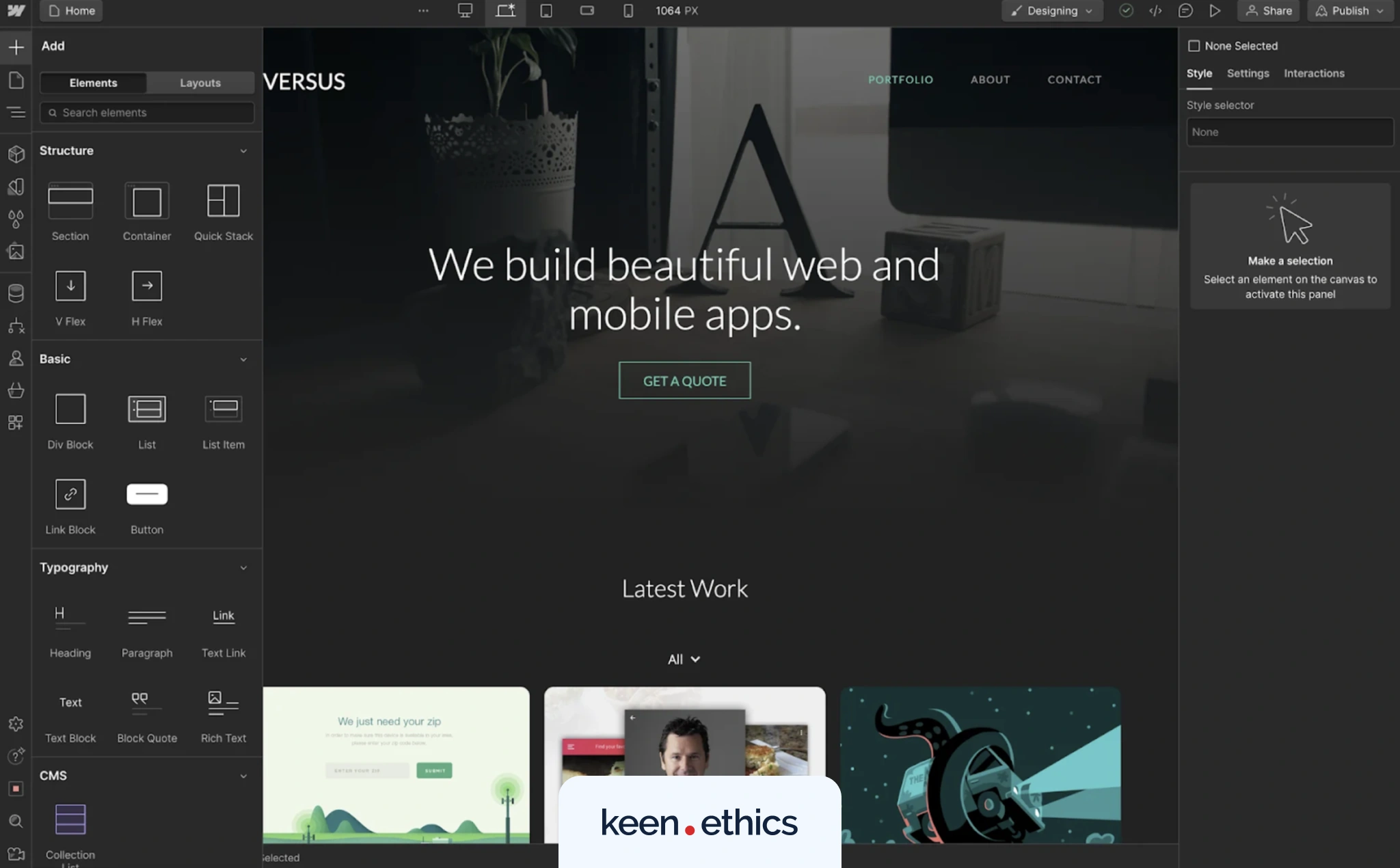
This level of freedom is ideal for designers and teams that want pixel-level precision. According to user reviews, many people describe the Webflow interface as powerful but overwhelming at first. That said, once you do get the hang of it, this CMS feels exactly what many businesses need.
Pricing Comparison
One of Webflow’s benefits is that you can build your site for free until you’re ready to publish. When you push it live, you’ll need to select a paid plan. For e-commerce businesses, Webflow offers plans tailored to different sizes and needs.
Here’s a breakdown of Webflow’s pricing tiers in 2025:
- Standard: ~$29/month annually (or ~$42/month‑to‑month);
- Plus: ~$74/month annually (or ~$84/month‑to‑month);
- Advanced: ~$212/month annually (or ~$235/month-to-month).
These are per-site prices, and it’s worth noting that additional costs may apply depending on your setup, such as workspace plans for teams or paid features like localization, analytics, or performance.
Shopify also introduces generous incentives for new users. First-time store owners can take advantage of a 3-month trial at $1/month, which makes it easy to explore the ecosystem. On top of that, Shopify offers up to 25% off when you pay annually.
Here’s a breakdown of Shopify’s pricing tiers in 2025:
- Starter plan: ~€5/month;
- Basic: ~€19/month annually (or ~€27/month‑to‑month);
- Grow: ~€56/month annually (or ~€74/month‑to‑month);
- Advanced: ~€289/month annually (or ~€384/month‑to‑month);
- Plus: ~$2,300/month.
Keep in mind that costs can increase depending on your store setup. You might need to factor in transaction fees, premium themes, third-party apps, and additional payment gateway charges depending on your region or use case.
Design Flexibility & Templates
In terms of design flexibility, Webflow is the clear winner. Its library includes 7,000+ themes across business sites, portfolios, and e‑commerce. Many of these templates are built with rich animations, complex layouts, and customization baked in. That means if you’re after a truly distinctive brand look, Webflow gives you the tools.
As we mentioned earlier, this development platform gives you maximum layout freedom to move elements, apply custom animations, and design across multiple breakpoints.

Shopify’s official theme marketplace features a list of 800+ free and paid themes currently available. The advantage is that every theme is crafted with e‑commerce in mind, meaning product grids, checkout flows, mobile responsiveness, and conversion‑oriented layouts are built in from the start.
And while Shopify isn’t visually flexible, it shines in template swapping. You can change themes fairly easily, test variations, and switch designs without a full rebuild.

Apps & Integrations
On Webflow’s side, the marketplace is growing but still relatively modest. The official Help Center notes you can explore apps that interact with the Webflow canvas, CMS collections, ecommerce features, and more. In fact, as of 2025, the Webflow Apps Marketplace is home to 300+ apps, according to a Webflow update.
Because the number of apps is relatively short, you might find fewer off‑the‑shelf solutions for bulk commerce features or large‑scale operations.
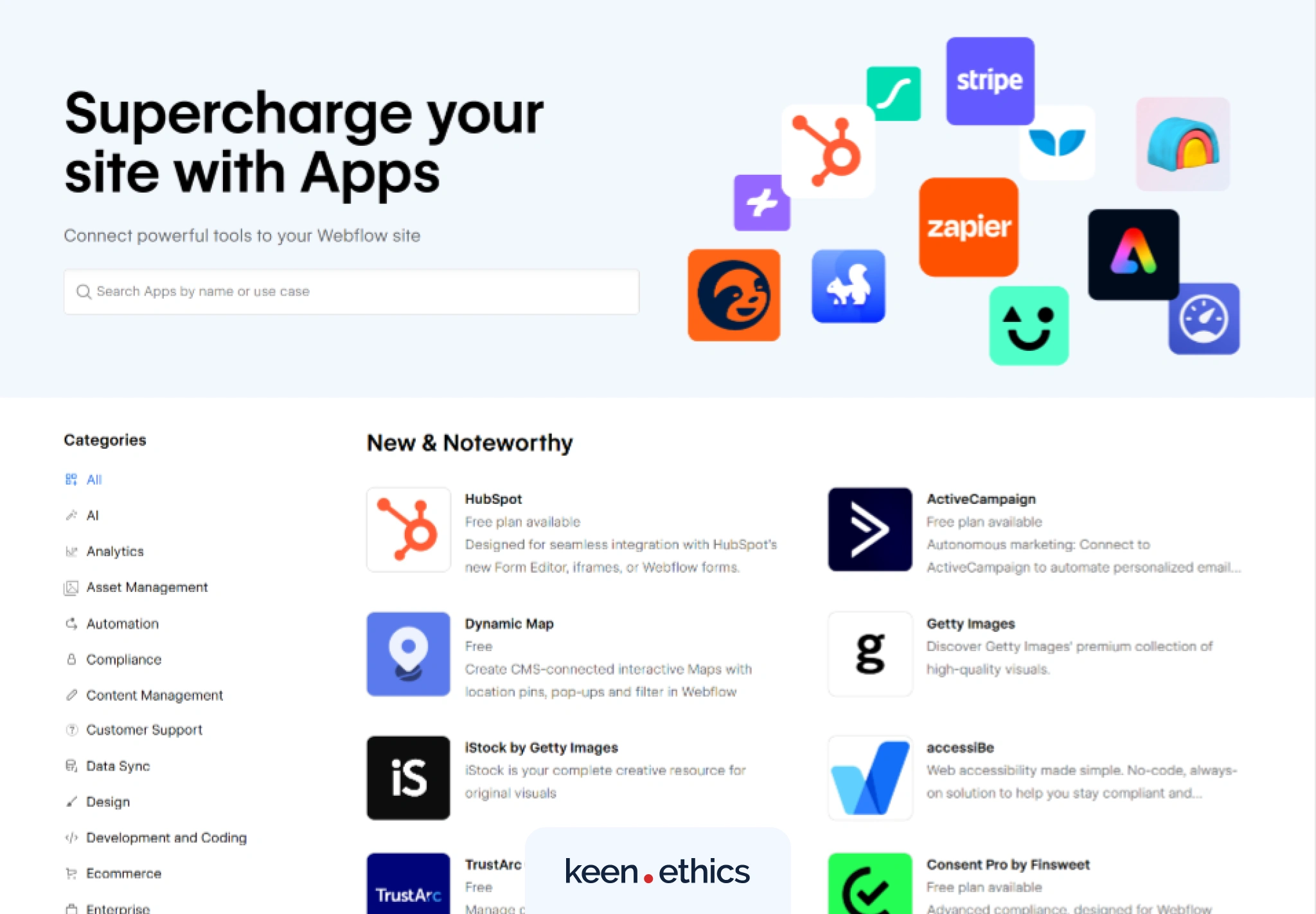
In turn, Shopify’s ecosystem is huge. One recent count says that it features around 15,000+ apps. This means that you’ll find apps for nearly any e-commerce need. The volume alone gives you flexibility in choice, but also means you’ll need to evaluate quality, compatibility, cost, and how well it integrates with your store.
What we really liked is that Shopify offers helpful filters, a strong search system, and even side-by-side app comparisons to simplify decisions.
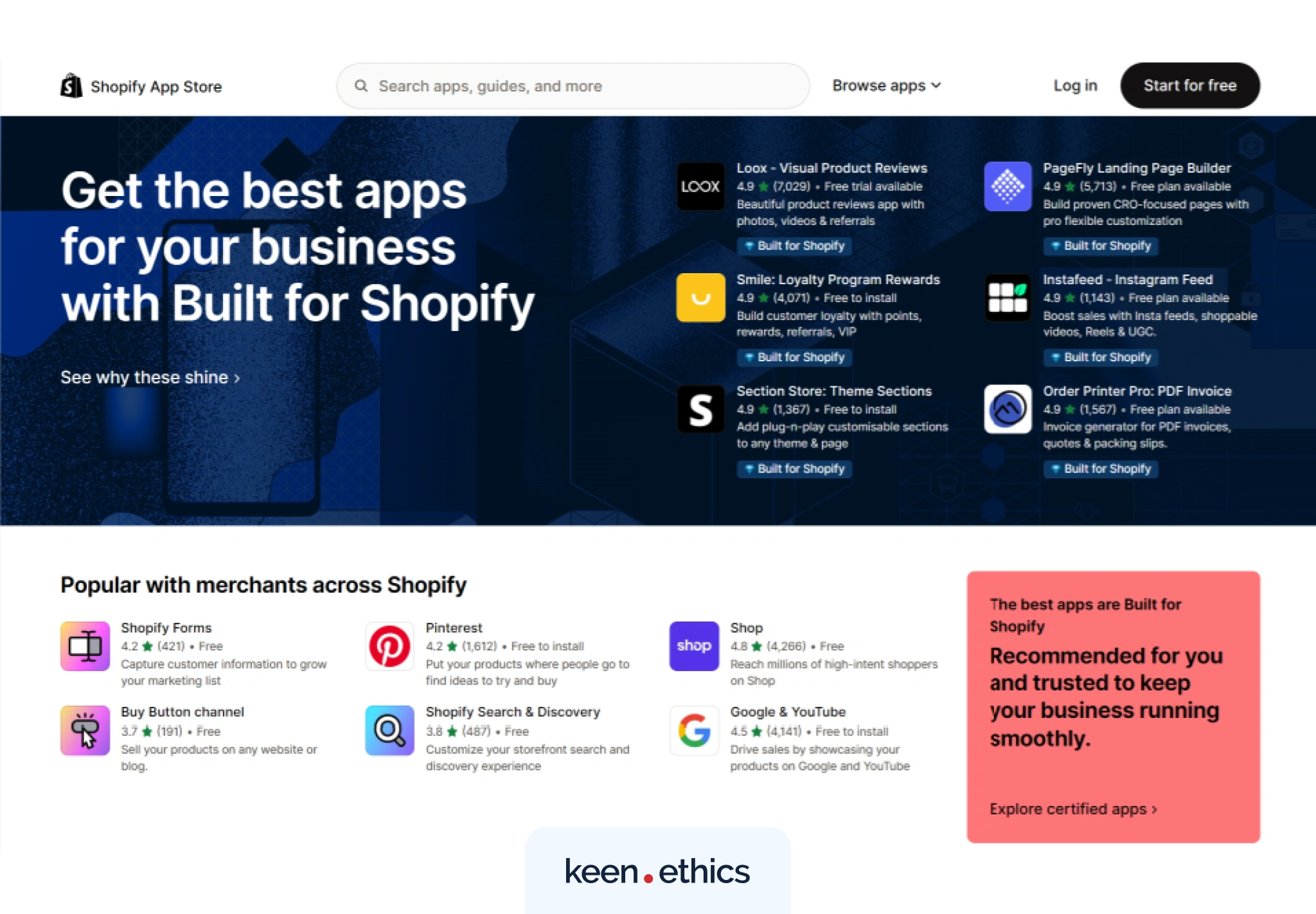
Security & Compliance
Webflow adopts a “secure by design” approach. The platform achieved SOC 2 Type II compliance, which means an independent auditor verified Webflow’s controls for security, availability, and confidentiality across systems. This CMS also supports encryption in transit, regular backups, and a robust access control model.
Under the hood, Webflow uses hosting on large‑scale infrastructure (AWS, CDN networks) and delivers static‑file versions of sites, reducing server‑side attack surfaces.
Shopify is engineered with commerce‑first security standards. Every store benefits from built-in SSL encryption, and the tool meets PCI DSS Level 1 compliance (the highest standard for payment card processing). It also holds SOC 2 Type II and SOC 3 reports, demonstrating third‑party auditing of security and availability controls.
Additional features include fraud detection, two‑factor authentication (2FA) for admin accounts, automatic backups, and disruption‑resilient hosting.
SEO Tools
When it comes to being found online, both Shopify and Webflow cover the essentials: editable page titles, meta descriptions, alt text for images, clean URLs, 301 redirects, automatic sitemaps, and responsive templates.
Webflow offers a little more leeway for those who want to dig into the details. With the visual editor, you can tweak how content loads, control the hosting environment (CDN, HTTPS), and even fine-tune the output of your site’s code for performance and speed. In short, Webflow gives you an advantage in controlling factors that impact SEO.
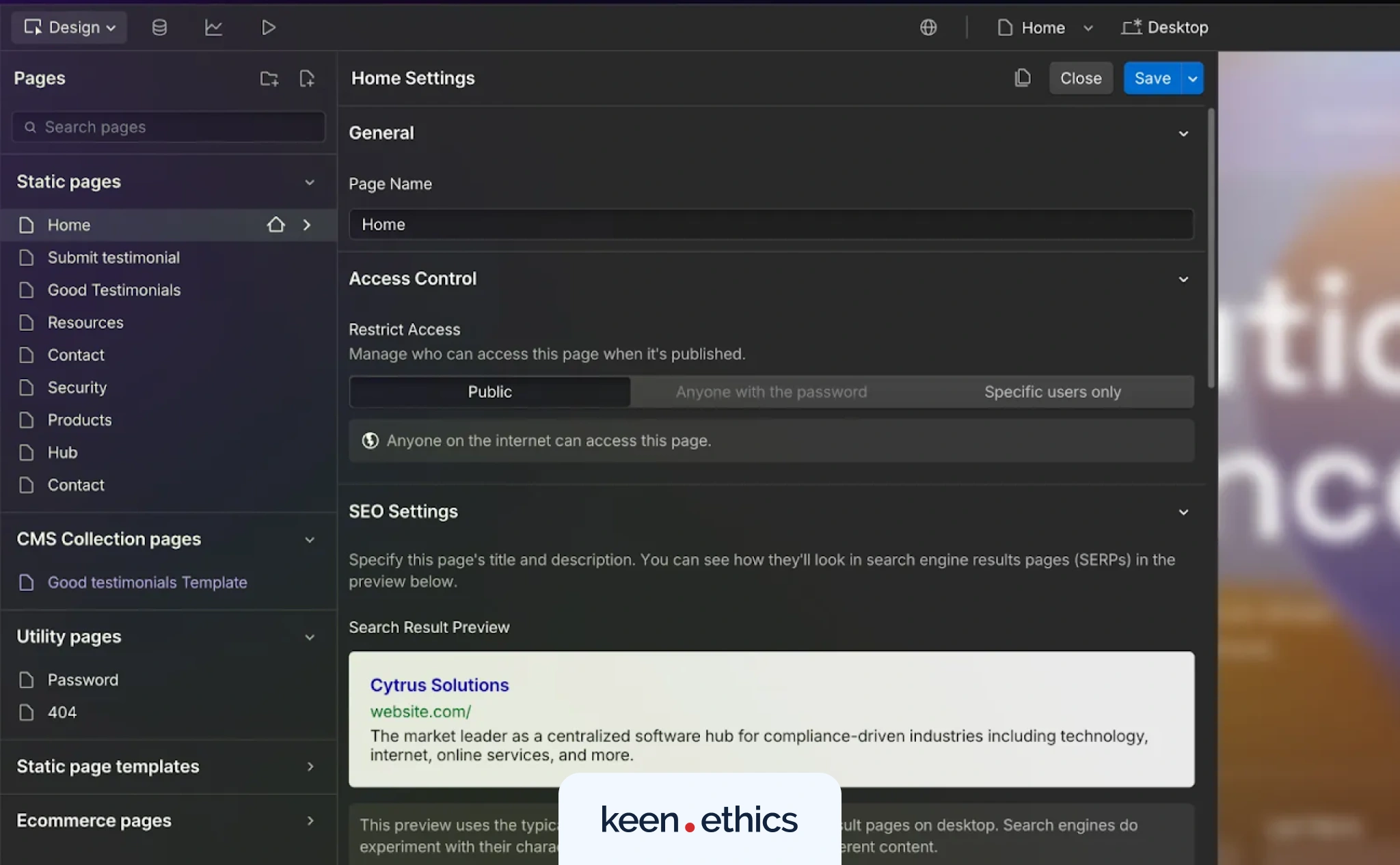
Shopify makes SEO feel simpler and straightforward. From the dashboard, you’ll access basic SEO tools, get automatic sitemaps, and take advantage of built-in hosting and CDN structure without thinking about it. Many reviews highlight that store owners can launch quickly and stay focused on content and products.
By the way, if you want unconventional URL structures, very large blogs (especially in Webflow’s case), or ultra‑custom content types, you may find the Shopify platform slightly constrained unless you add apps or custom code.

AI Capabilities
The Webflow vs Shopify competition is getting fiercer as new technologies reshape how we create a website and manage it. In 2025, with AI becoming widespread across industries, both CMSs are working to leverage this potential.
Webflow’s AI features lean into design assistance, content generation, and real‑time optimization of site structure. For example, AI Site Builder allows users to generate a professional layout from simple prompts, including images and copy, and build a UI components system that scales with your brand.
Beyond that, Webflow’s MCP server lets teams connect large language models (LLMs) or autonomous agents directly into workflows. This way, you can use AI to assist with CMS management, SEO recommendations, and ongoing site maintenance.
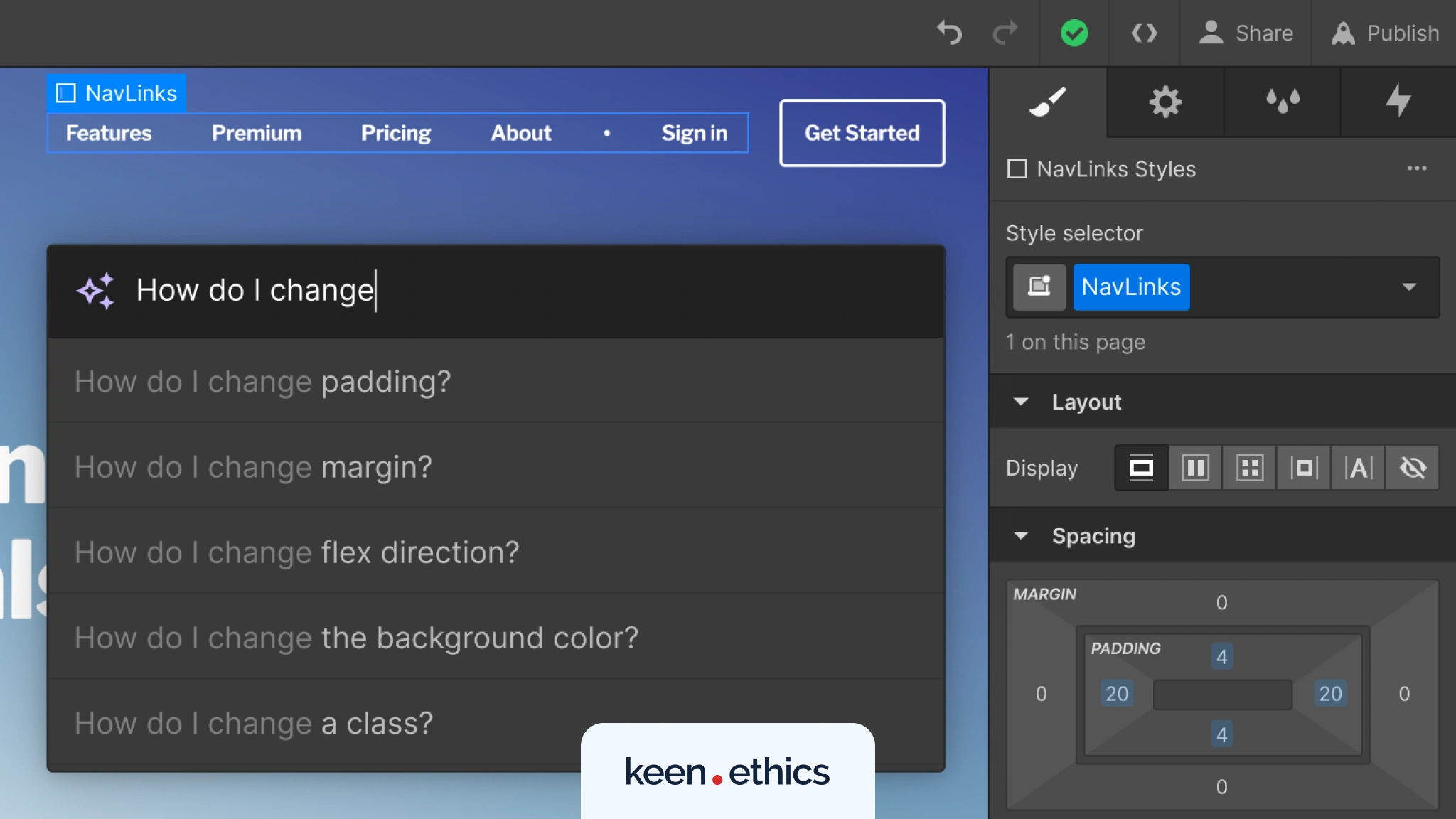
Shopify is using AI to optimize commerce operations, scale customer experience, and automate tasks that previously required heavy manual input. Shopify Magic and Sidekick suites deliver functionality such as product description generation, image editing, chatbots, personalized product recommendations, and marketing automations.
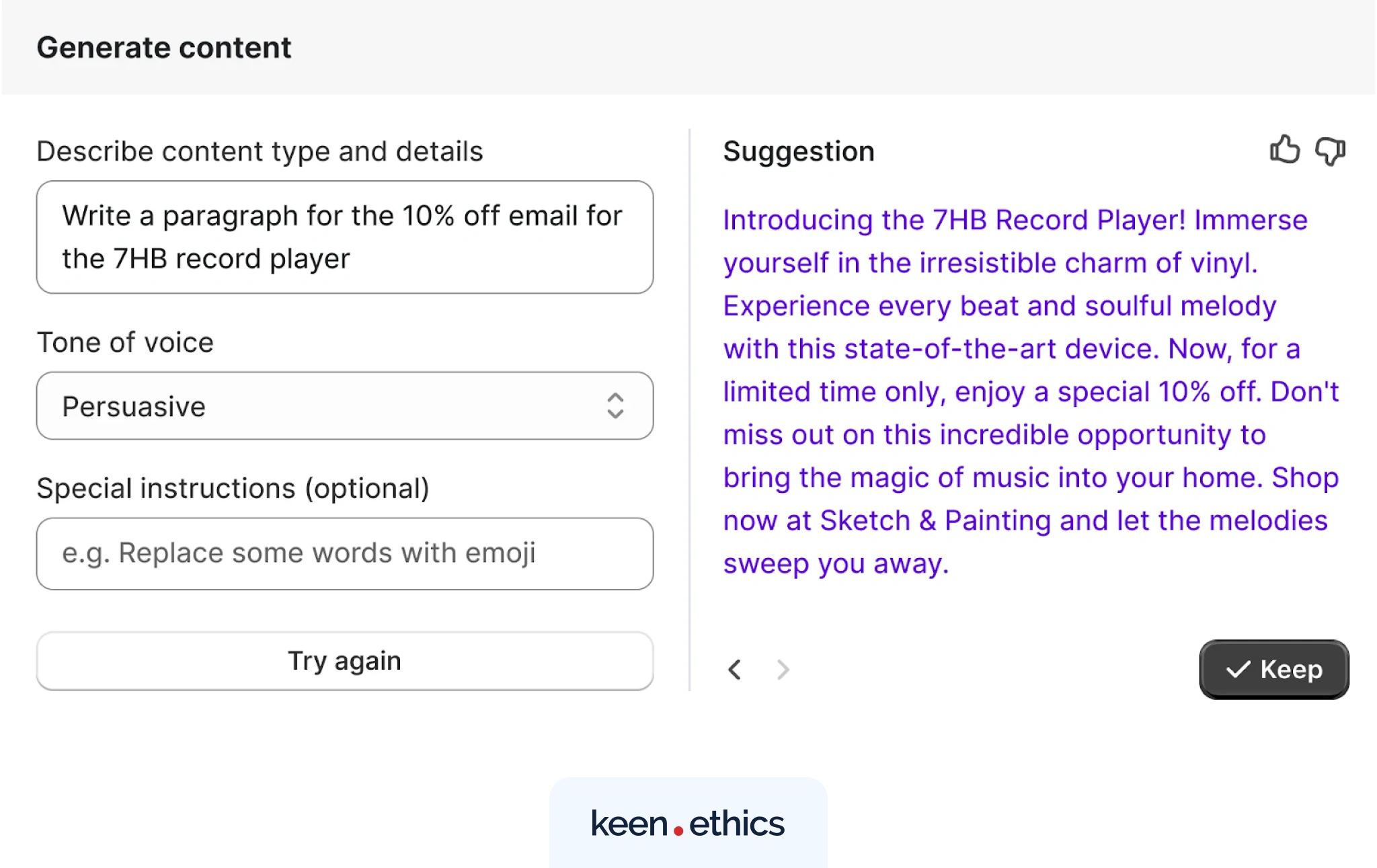
Scalability
Webflow is built to help sites grow without breaking. The company notes it supports scaling through modular design systems, global CDNs, and enterprise‑grade hosting, enabling sites to remain performant and manageable.
This platform’s flexibility comes with added responsibility. If you’d prefer to skip the technical hurdles, our no-code development services can help. Keenethics experts know how to maintain performance at scale and take care of your site.
Shopify is engineered for volume. Its infrastructure handles large traffic spikes, high order volumes, and global operations. Official documentation emphasises that scalability is key for commerce solutions, and they’ve developed their systems accordingly.
For enterprise customers using Shopify Plus, the CMS offers a bunch of advanced features, among which are higher API limits, priority 24/7 phone support, and systems built for traffic surges and complex workflows.
Customer Support
Support structures say a lot about a platform’s utility, and after comparing Shopify vs Webflow, we can confidently say that both handle support well.
Webflow includes a Help Center, a community forum, detailed guides via Webflow University, and the ability to submit support tickets through the Support Portal. Features like live chat or phone support are reserved for Enterprise‑level users only.

Shopify offers multi‑channel support for store owners: live chat, email, and phone support across many regions, time zones, and languages. The Help Center is loaded with resources, guides, and FAQs, helping users troubleshoot issues themselves.
For higher‑tier plans, especially Plus, Shopify provides enhanced support features like dedicated success managers, priority queues, and specialist teams.
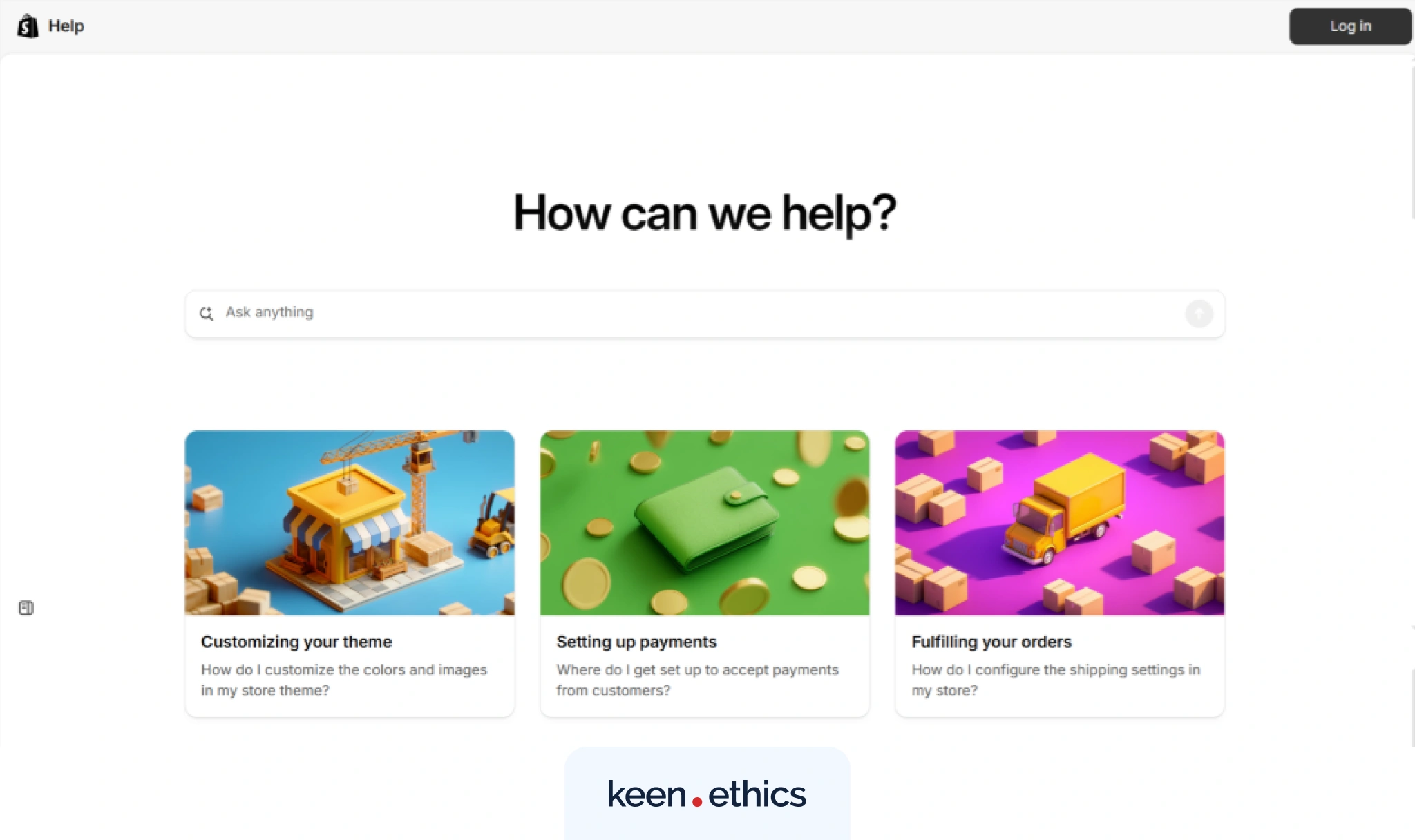
Webflow vs Shopify E-commerce Features Comparison
At the end of the day, the Webflow vs Shopify competition takes center stage when you’re building an e-commerce website. As we’ve mentioned earlier, Shopify is a dedicated commerce service. But some would argue that the Webflow web development platform has more to offer. So let’s put the debate to rest.
Payments and Checkout
Webflow supports only two checkout providers — Stripe and PayPal. This setup allows you to accept transactions via major credit cards, Apple Pay, Google Pay, and PayPal. While this may be enough for many use cases, it’s limiting if you need access to local gateways or very niche payment methods.
Webflow also applies a 2% transaction fee on the Standard pricing plan. However, this fee is waived on Plus and Advanced tiers.

With Shopify, you can use over 300 different payment processors, including many localized gateways. Plus, it has a checkout system named Shopify Payments that integrates directly with your store and eliminates transaction fees entirely (as long as you’re using it).
If you choose a third-party gateway, you’ll incur extra payment surcharges ranging from 0.2% to 2%, depending on your plan.
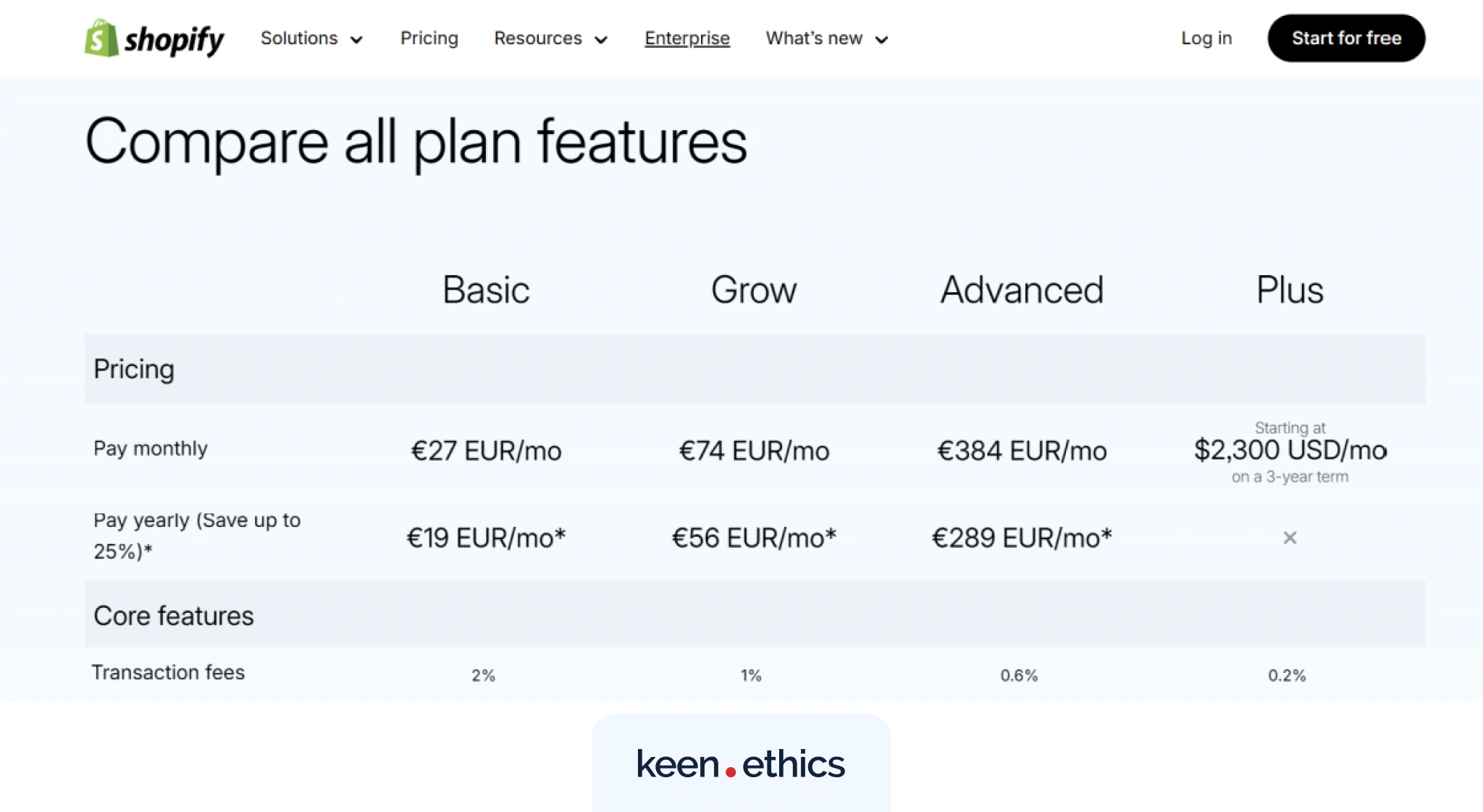
Product Management
With Shopify and Webflow, you’ll find support for bulk product uploads, variant options, and digital goods, but each has limits.
In Webflow, you can manage products via the Ecommerce Collections panel manually or through CSV bulk uploads. On the standard plan, you’ll be restricted to 500 item uploads, while higher tiers increase those limits up to 15,000. Exporting and importing beyond those limits is possible, but you’ll likely hit practical boundaries sooner.
Webflow also provides a flexible framework for handling different product types, and is particularly strong when you’re managing content-rich product pages.
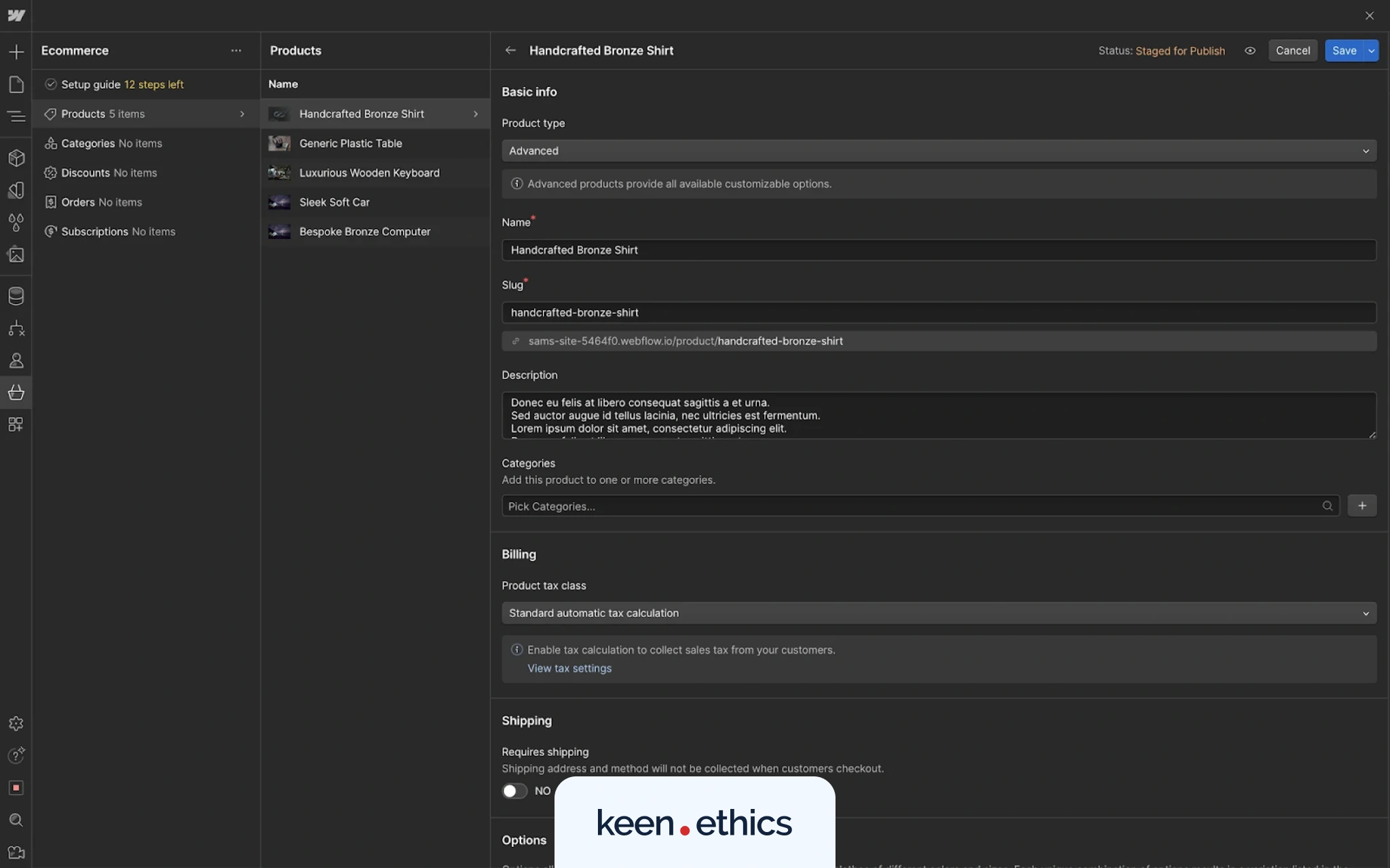
Shopify has built-in CSV import and export features that are well-documented. This solution supports up to 50,000 products, with daily limits only applying once you exceed that number, unless you’re on the Plus tier. Shopify also supports up to 100 variants per item by default, with three configurable product options.
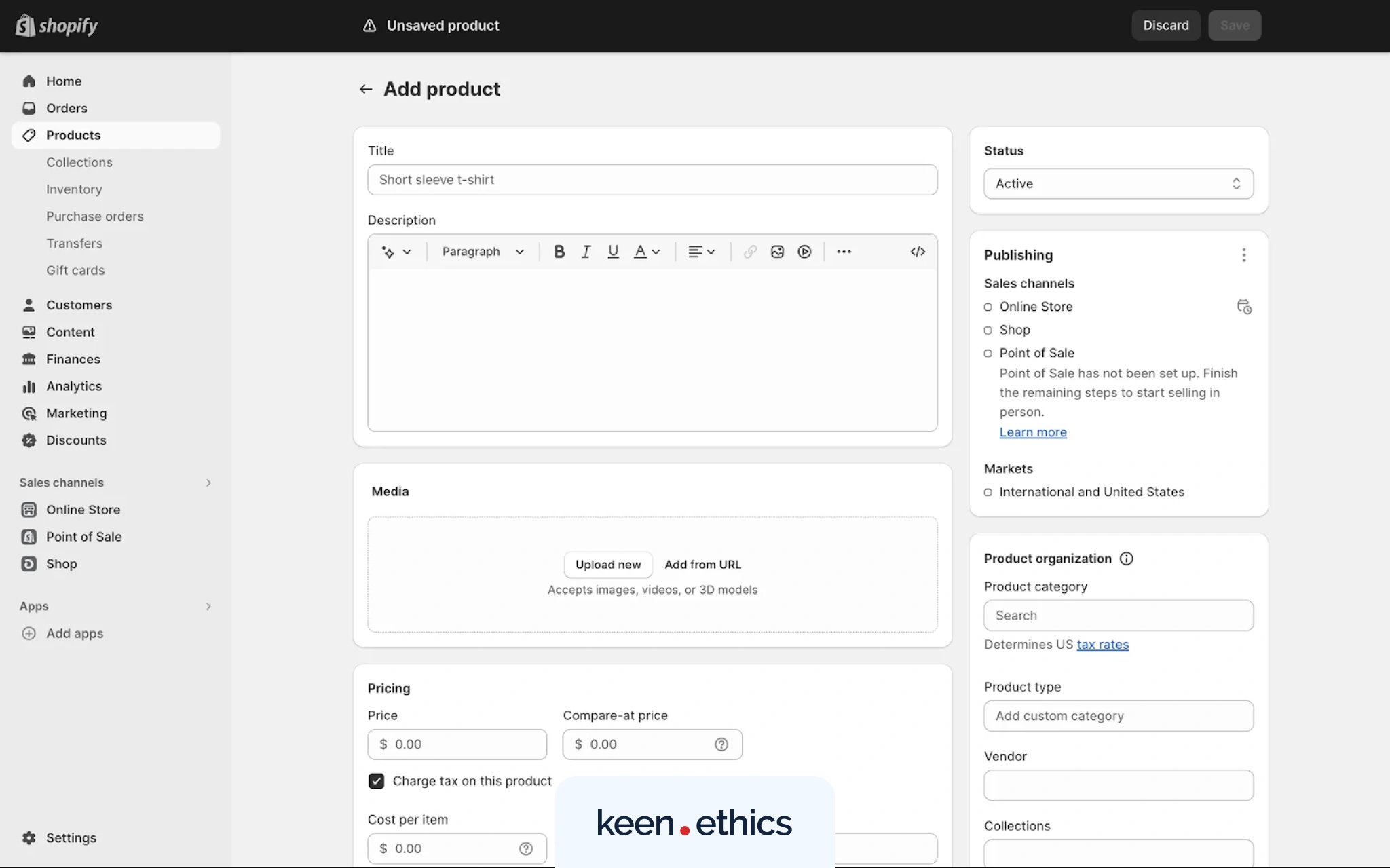
Shipping and Fulfillment
By using Webflow, you can define and manage shipping zones, methods, and rates directly within e‑commerce settings. For example, you can set different logistics rules based on region, weight, item count, or order value.
Moreover, Webflow supports integrations with carrier‑agnostic platforms like Shippo, which connects your store to 85+ delivery carriers, enables label generation, batch printing, tracking notifications, and more.
Shopify offers a commerce‑centric fulfillment and shipping framework. Its dashboard allows you to define physical locations, set up delivery profiles, customize distribution zones, and manage order processing from a single interface.
For merchants looking for true scale, Shopify Fulfillment Network (SFN), a warehousing and distribution solution, handles storage, packaging, and delivery, fully integrated into the backend.
Global Selling
Webflow has stepped up its international tools in recent years. With the “Localization” feature, you can adapt your site to different languages and regions, complete with machine‑powered translation, custom glossaries, localized styles and URLs, and SEO support like hreflang tags and locale‑aware routing.
This functionality requires technical setup and comes with additional costs, starting at $9 per locale per month.
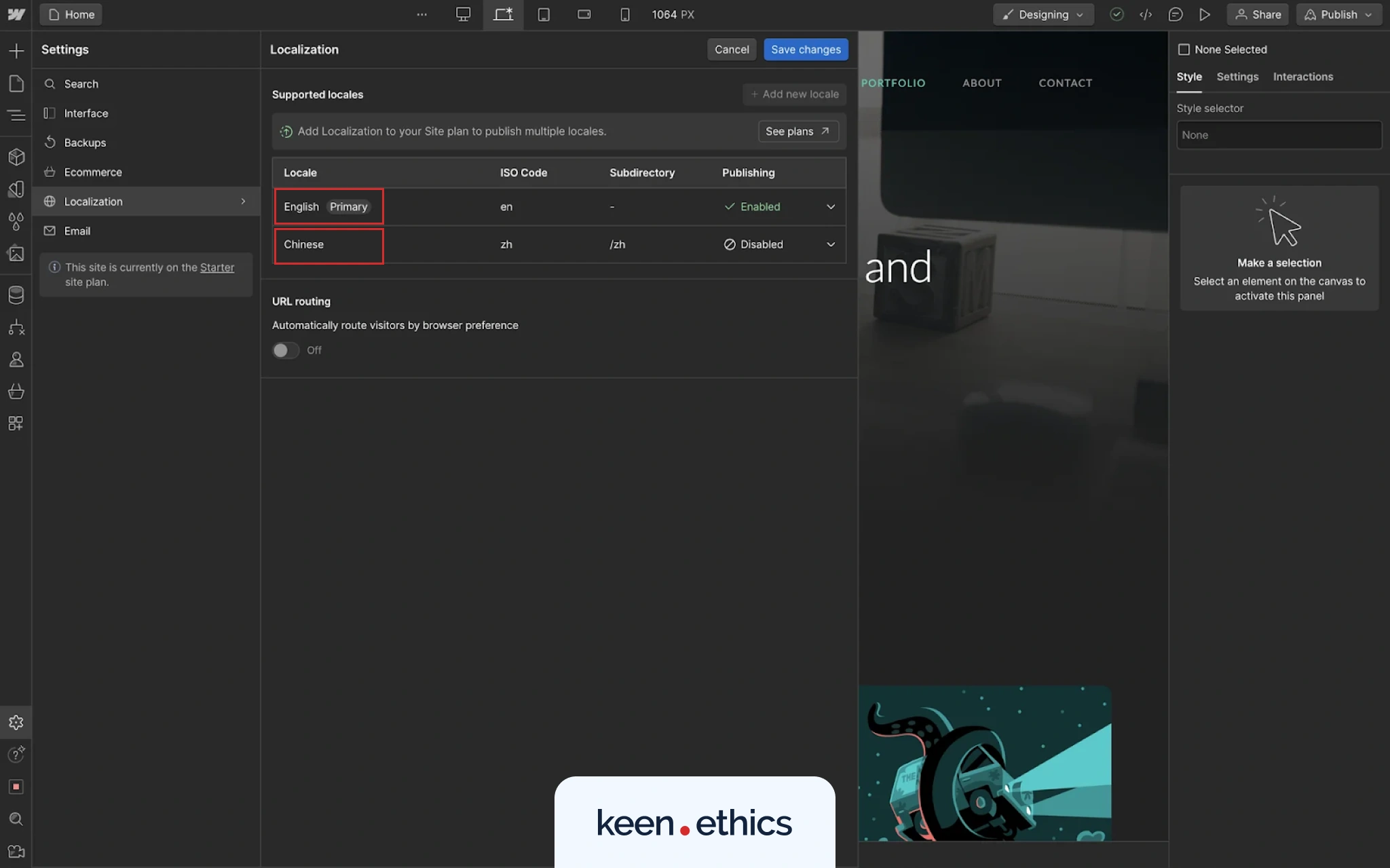
Shopify’s “Markets” feature lets you manage multiple regions from a single store. You can define local currencies, language versions, localized payment methods, and even assign regional domains or subfolders. It also automatically detects the visitor’s location via IP address and displays prices in their currency.
As Shopify states, stores using these tools can boost conversions by offering a familiar experience for visitors.
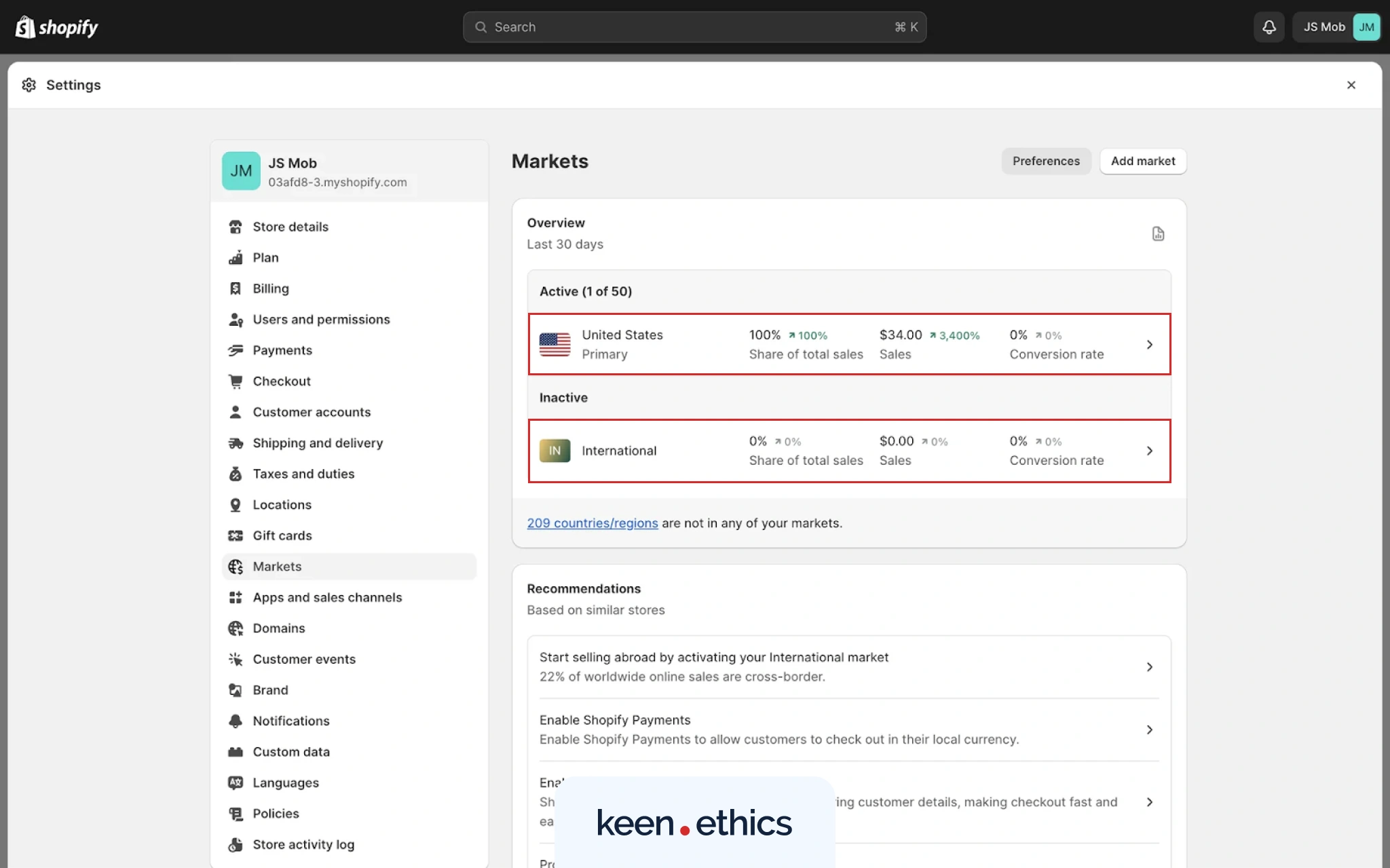
Marketing Tools and Cart Recovery
One of the most powerful levers for boosting online sales lies in how well your platform handles follow‑up and re‑engagement.
With Shopify, for example, abandoned checkout recovery is built into most plans. Merchants can send automated emails when a customer abandons the checkout process, tailor the timing and content of those emails, and track recovery performance in real-time. All these actions can translate into meaningful revenue.
Shopify also supports advanced automation through the ecosystem: apps, triggers, multi‑step email flows, SMS follow‑ups, exit‑intent pop-ups, and so on.
Webflow’s story is different. Native cart recovery tools are absent, forcing you to rely on third‑party integrations to plug the gap. While this keeps you in the design‑driven Webflow ecosystem and allows very tailored branding, it means extra setup work, additional monthly cost, and reliance on external providers.
Dropshipping and Print on Demand
For merchants planning to run a store without holding inventory, dropshipping and print-on-demand (POD) are essential business models. And when it comes to supporting these workflows out of the box, Shopify leads the pack.
Shopify offers native support and a massive app ecosystem for both dropshipping and POD. Popular names like AliExpress, Spocket, Modalyst, Zendrop, Printful, and Printify are all one-click integrations. That means you can browse products, sync catalogs, automate order fulfillment, and even customize packaging right in the system.
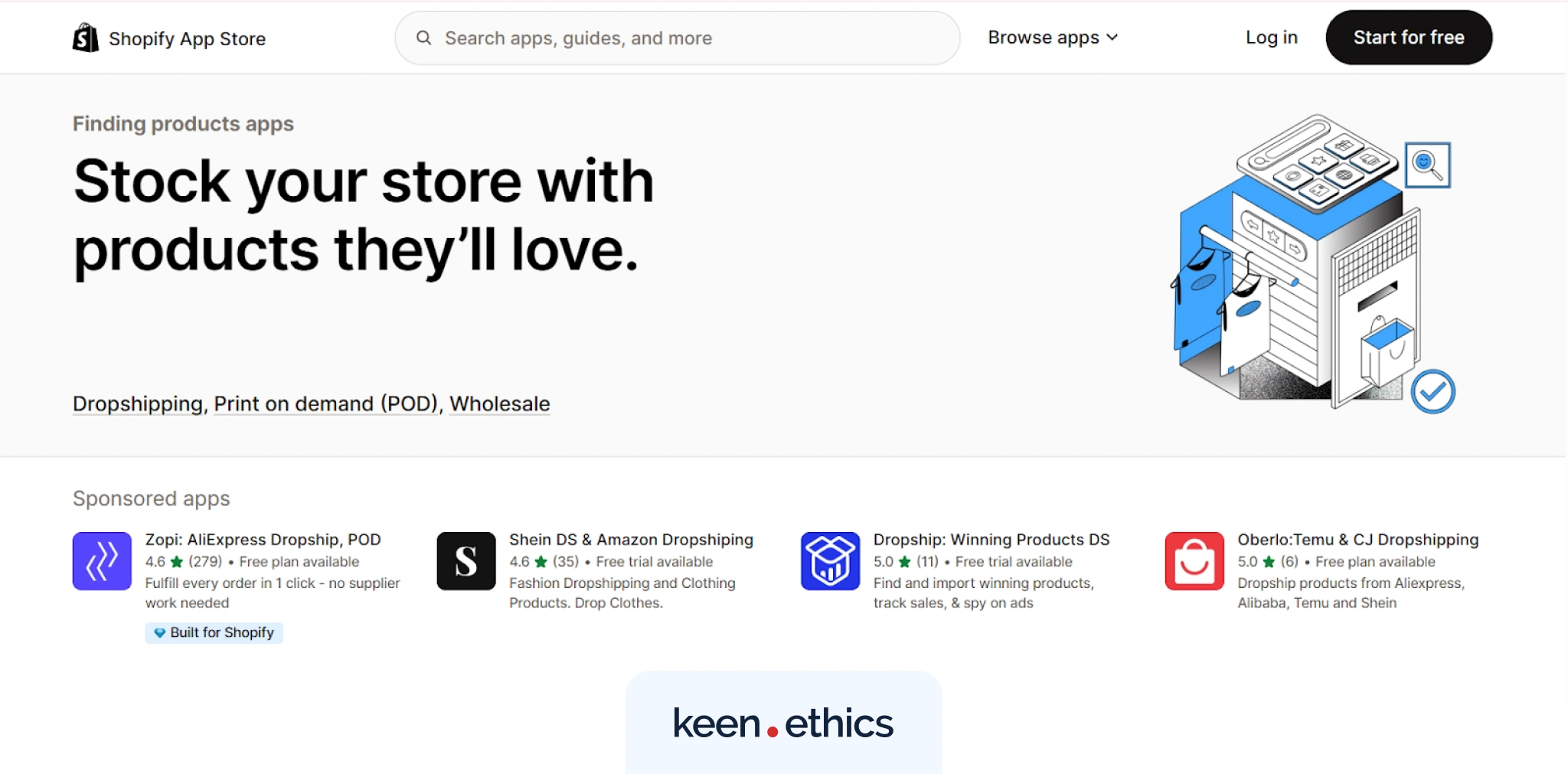
Webflow relies on a manual approach. As of now, there are no official dropshipping integrations available, and only one directly supported POD provider, Printful, was deprecated in March 2025.
It’s technically possible to connect a Webflow store to a dropshipping supplier, but it typically involves using automation services like Zapier or Make, setting up API connections, and managing the sync manually. That extra effort might lead to configuration complexity, higher costs, and maintenance overhead.
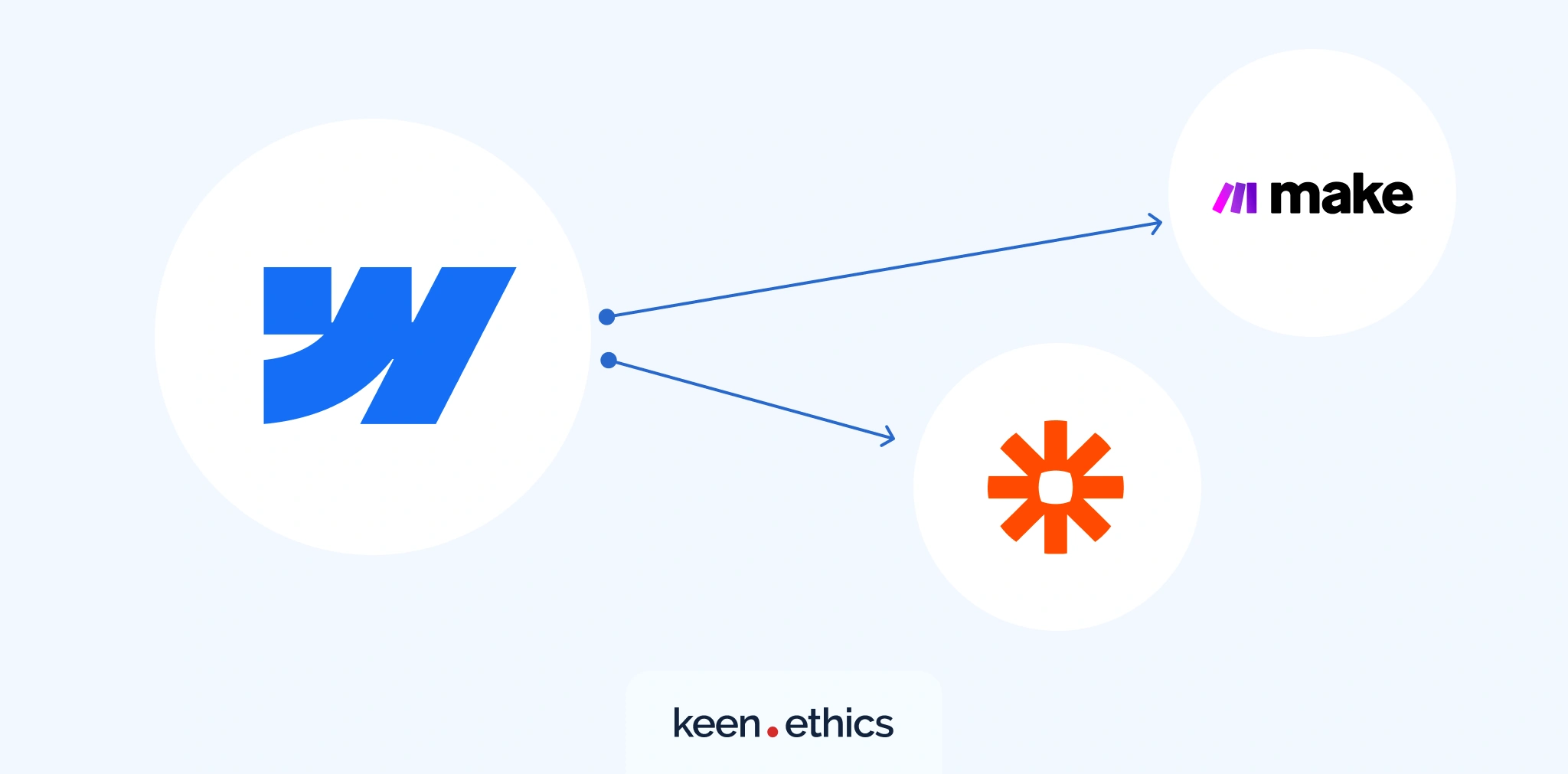
POS Capabilities
When your online store extends into a physical setup, you’ll want a tool that supports point-of-sale (POS) as seamlessly as it supports your custom website. In this regard, Shopify and Webflow take very different approaches.
Shopify’s POS system offers native support for in-store payments, real-time inventory syncing across sales channels, staff role management, and compatibility with hardware like card readers, barcode scanners, and receipt printers.
There are two POS tiers: the basic version included with all plans, and Shopify POS Pro (~$89/month per location) that unlocks unlimited registers, advanced analytics, in-store pickup and shipping options, and staff performance tracking.
Webflow doesn’t offer any native POS capabilities. As with POD, integrating POS tools requires third-party services, which means more manual effort. For brands focused on online sales or occasional in-person events, this may be sufficient.
Webflow vs Shopify Final Breakdown
By now, you’ve probably gathered enough information to feel confident in your decision for website development, or, possibly, overwhelmed by the sheer volume of it. That’s exactly why we’ve put together a side-by-side breakdown.
First up, here’s how Webflow and Shopify compare across their core platform features:
| Feature Category ㅤ | Webflow ㅤ | Shopify ㅤ |
|---|---|---|
| Ease of Use & Interface ㅤ | Steep learning curve, design-centric UI ㅤ | User-friendly dashboard and drag-and-drop ㅤ |
| Design Flexibility ㅤ | Advanced layout control, 7,000+ templates ㅤ | 800+ commerce-focused themes, faster setup ㅤ |
| Apps & Integrations ㅤ | ~300 apps, more niche, still maturing ecosystem ㅤ | 15,000+ apps, strong marketplace, broad integrations ㅤ |
| SEO Tools ㅤ | Full control, responsive, customizable meta & tags ㅤ | Great technical SEO, speed-optimized templates ㅤ |
| AI Capabilities ㅤ | AI Site Builder, CMS agents, SEO suggestions via LLMs ㅤ | Shopify Magic, Sidekick, AI-driven content, and store setup ㅤ |
| Pricing ㅤ | Starts free; Standard plan ~$29/mo ㅤ | Starts $1/mo; Starter plan ~€5/mo ㅤ |
| Security & Compliance ㅤ | SOC 2 Type II, SSL, CDN-based hosting ㅤ | PCI DSS Level 1, SOC 2/3, built-in security tools ㅤ |
| Scalability ㅤ | Modular system, robust infra; needs thoughtful design to scale well ㅤ | Enterprise-ready infra, API limits scale with plan ㅤ |
| Customer Support ㅤ | Tickets, docs, Webflow University; chat only for Enterprise ㅤ | Live chat, email, phone, priority support on higher plans ㅤ |
And since most of you came here to understand how these two platforms handle e-commerce, here’s a focused comparison on just that:
| E-commerce Category ㅤ | Webflow ㅤ | Shopify ㅤ |
|---|---|---|
| Payments & Checkout ㅤ | Stripe & PayPal only; 2% fee on Standard plan ㅤ | 300+ gateways; Shopify Payments removes extra fees ㅤ |
| Product Management ㅤ | Up to 15k products; 3 options, 50 variants; flexible CMS use ㅤ | 50k+ products; 3 options, 100+ variants; CSV-friendly ㅤ |
| Shipping & Fulfillment ㅤ | Manual setup; Shippo integration; rules by region or value ㅤ | Native shipping engine; Shopify Fulfillment Network ㅤ |
| Global Selling ㅤ | Paid Localization add-on; multilingual content, SEO, and custom domains ㅤ | Shopify Markets included (most plans); currency & language auto‑detect ㅤ |
| Marketing & Cart Recovery ㅤ | No built-in recovery; 3rd-party apps required ㅤ | Built-in recovery flows, SMS/email automations ㅤ |
| Dropshipping & POD ㅤ | No native dropshipping; requires custom setup ㅤ | 700+ apps available ㅤ |
| POS Capabilities ㅤ | No native POS; only possible with custom integrations ㅤ | Shopify POS & POS Pro for physical retail, rentals available ㅤ |
Wrapping It Up
So, Webflow or Shopify?
If you’ve made it this far, you already know there’s no single best platform. Shopify is a solid bet for selling, large inventories, and dropshipping. But when it comes to design, brand-first experiences, and custom layouts, Webflow gives you more room to grow.
Of course, more power often means more responsibility. The team at Keenethics doesn’t fear that kind of challenge, and we’re always here to help you build solid digital solutions. All you need is a clear goal, an idea worth building, and the drive to scale it.
Let Keenethics turn your vision into a scalable, sales-ready Webflow store.
FAQ
Can I use Webflow and Shopify together?
Yes, you can combine them, but it takes some technical setup. Many online businesses use Webflow for the front‑end and connect it with Shopify for checkout and order management. This can be done through tools like Shopify Buy Button, Udesly, or custom API integrations. However, managing two systems means extra maintenance.
Is Webflow good for e-commerce?
It is. Webflow lets you create unique storefronts, tailor interactions, and visually manage product pages without heavy coding. While this website builder is not as commerce‑focused as Shopify, it covers essentials like product catalogs, carts, and checkout, plus integrations for payments and analytics.
How do Shopify and Webflow compare in pricing?
Webflow starts free but charges once you publish your site, with e‑commerce plans ranging roughly from $29 to $212 per month (billed annually). Shopify starts at €5 per month for basic selling tools, with standard plans from €39 to €399, and Shopify Plus for enterprises starting around $2,300/month.
Is Webflow or Shopify better for SEO?
Both platforms perform well. Webflow gives you control over metadata, structure, and custom SEO setups, making it great for heavy sites. Shopify handles technical SEO automatically, offering clean URLs, fast load times, and responsive themes. So, if SEO is part of your strategy, we confidently recommend Webflow.

